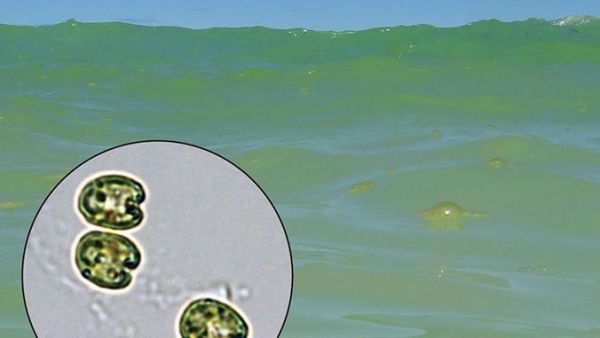A new, unusually large virus that infects common marine algae has been characterized by researchers at the Daniel K. Inouye Center for Microbial Oceanography: Research and Education (C-MORE) at the University of Hawaiʻi at Mānoa‘s School of Ocean and Earth Science and Technology. Found in the coastal waters off Oʻahu, it contains the biggest genome ever sequenced for a virus infecting a photosynthetic organism.
Said Christopher Schvarcz, UH Mānoa oceanography graduate student who led the project as part of his doctoral dissertation, “Most people are familiar with viruses, because there are so many that cause diseases in humans. But we are not alone; even the microscopic plankton in the ocean are constantly battling viral infections.”
Much of the phytoplankton that grows in the ocean every day gets eaten, thereby sustaining animals in the marine food web. It is common, however, for viral infections to spread through populations of phytoplankton. When this happens, the infected phytoplankton cells disintegrate and are decomposed by bacteria, diverting that food source away from the animals.
Continue reading at University of Hawaii.
Image via University of Hawaii.


